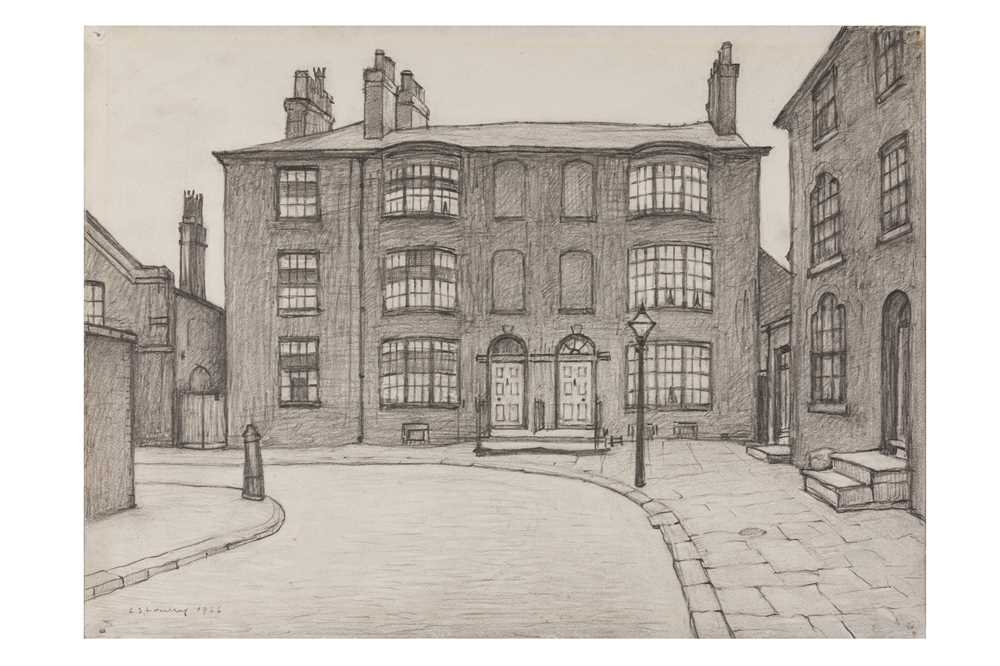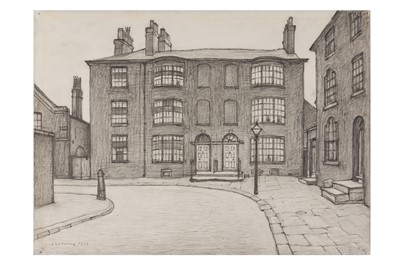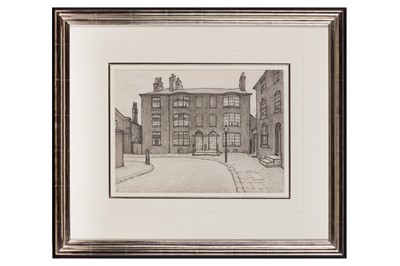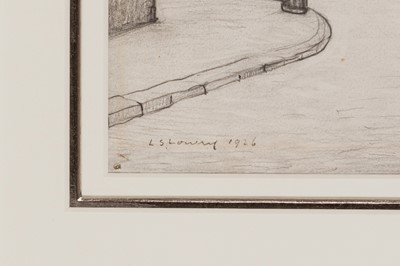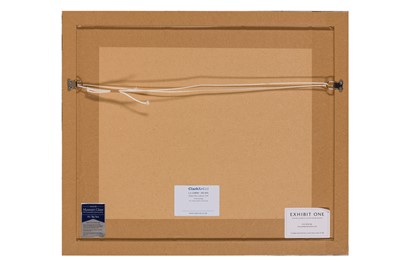12th Dec, 2023 14:00
Modern British & Irish Art
L.S. LOWRY, R.A. (BRITISH, 1887-1976)
L.S. LOWRY, R.A. (BRITISH, 1887-1976)
Hulme Place, Salford
signed and dated 'L.S Lowry 1926' (lower left)
pencil
26.7 x 36.5 cm. (10 1/2 x 14 3/8 in.)
Provenance
Sale; Christie's, London, 1 March 1968, lot 44, where purchased by
Private Collection
Their sale; Christie's, London, 2 Nov 2002, lot 144
With Clark Art Ltd., Cheshire, 2020, where purchased by the present owner
If Laurence Stephen Lowry had caught his train from Pendlebury to Manchester as intended, then possibly the world would have been deprived of one of the most talented and recognisable artists of the 20th Century.
Lowry moved from the Manchester suburb of Victoria Park to the less prosperous Pendlebury in 1909 with his parents after the family’s financial woes. He was initially dismissive and disinterested in his new surrounding environment.
However, in 1916, the artist did miss his train from Pendlebury, a suburb of Salford, and shortly afterwards walked into town. Here he witnessed the Acme Spinning Company Mill turning out, with its distinctive industrial architecture, and was inspired to capture the scene. The artist discussed the moment later in his life:
“One day I missed a train from Pendlebury - (a place) I had ignored for seven years - and as I left the station I saw the Acme Spinning Company’s mill … The huge black framework of rows of yellow-lit windows standing up against the sad, damp charged afternoon sky. The mill was turning out... I watched this scene - which I’d looked at many times without seeing - with rapture...” - L.S. Lowry
Following his departure from school, Lowry embarked on a career with the Pall Mall Company, later transitioning to rent collection. His work as a rent collector would provide a great deal of inspiration for his future artistic vision and output. During his lunch breaks and evenings, he dedicated time to private art lessons in antique and freehand drawing. In 1905, he secured a spot at the Manchester School of Art, studying under the French Impressionist Pierre Adolphe Valette. In 1915, Lowry continued his education at the Royal Technical Institute, Salford (later the Royal Technical College, Salford, and now the University of Salford) until 1925. This period marked the development of his interest in industrial landscapes and the establishment of his distinctive artistic style.
“I can’t think what you want to go to London for, you won’t find any better lamp posts there …” - L.S. Lowry
Whilst the artist would be become renowned for his bustling, industrial panoramic views, loaded with his ‘matchstick people’, for those familiar with his full oeuvre will know that he was equally adept and fond of depicting solemn, contemplative and isolated scenes. These range from his barren seascapes, hill-laden rural landscapes, and solitary single figures. Lowry often described his matchstick figures as being a projection of his mood and mental state at the time of painting.
Mark Hudson explained in his book: “The same can be said of the street furniture he incorporated into his paintings with an equally judicious sense of artistic licence – lamps, lamp posts, telegraph poles, post boxes, bollards, gates, railings, signposts, bandstands, statues, gravestones, memorials and the occasional post and pillar without any apparent function. These motifs are often repeated and have great significance. They sometimes take on a human form but so often go unnoticed.”
(Richard Mayson, Lowry’s Lamps, Unicorn, London, 2020)
Abandoned and lacking human presence, these creations are anything but “empty”; instead, they are rich with profound meaning.
“there must be innumerable ways of looking at the same aspects of life. A silent street, a building for instance, can be as effective as a street full of people to me. It is the outlook or message that matters.” - L.S. Lowry
Hulme Place, Salford is a prime example of masterful draughtsmanship and mood-capturing by one of, if not, Britain’s most famous artist, crafting the style that would later define him and serve as the foundation for his tremendous success, he garnered widespread international recognition that endured throughout his lifetime and beyond.
Sold for £27,500
Includes Buyer's Premium
Do you have an item similar to the item above? If so please click the link below to submit a free online valuation request through our website.
